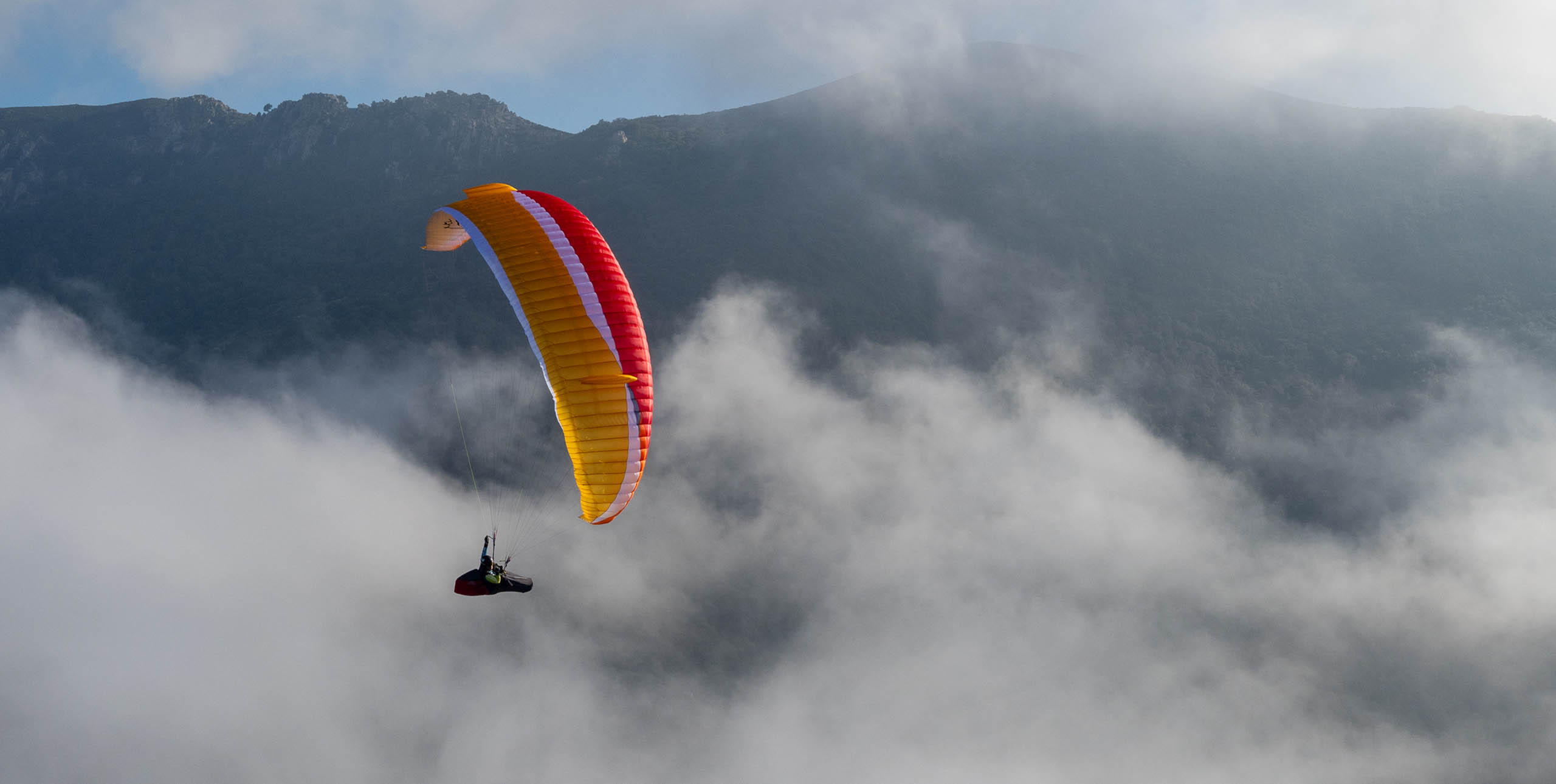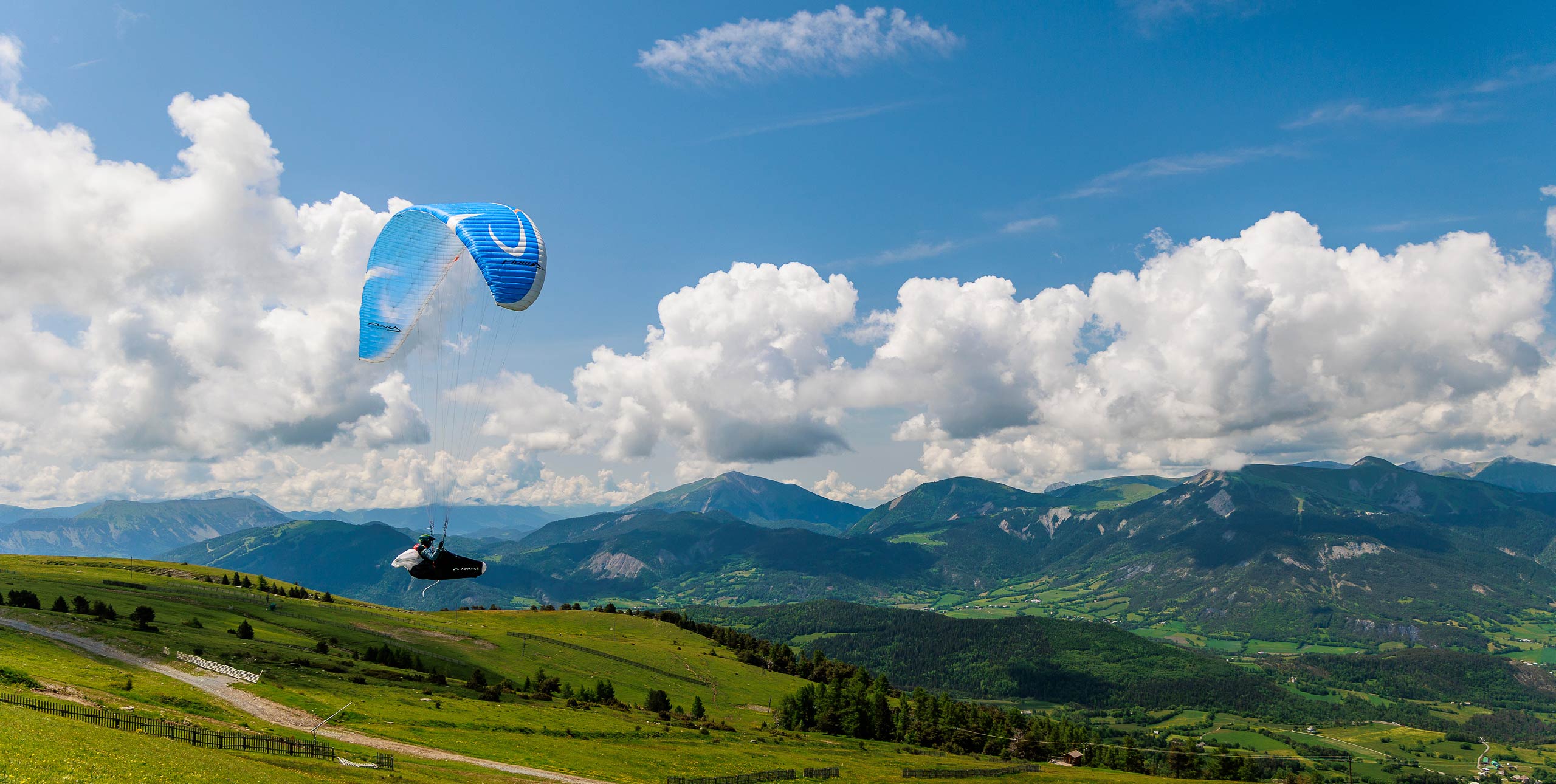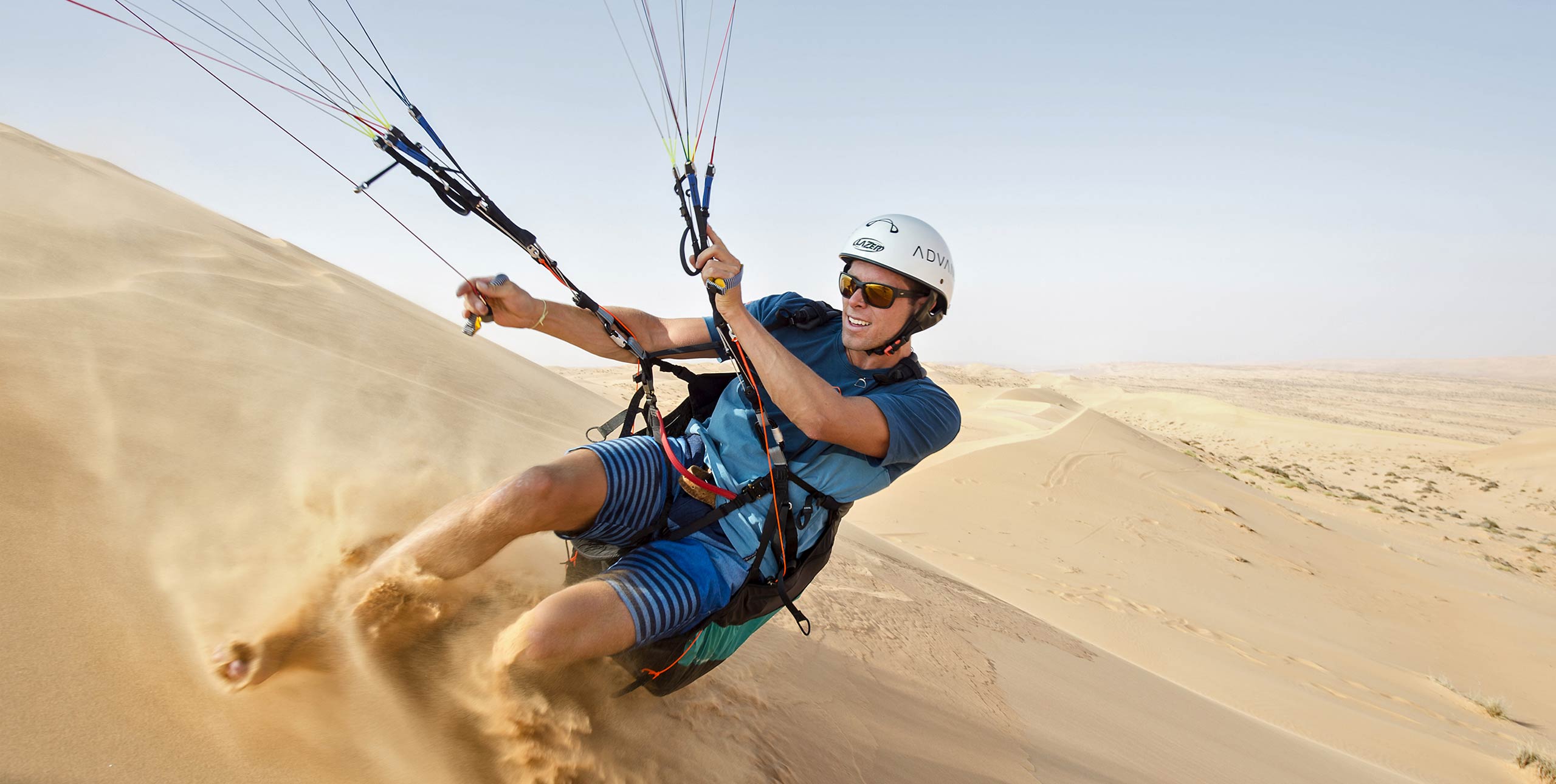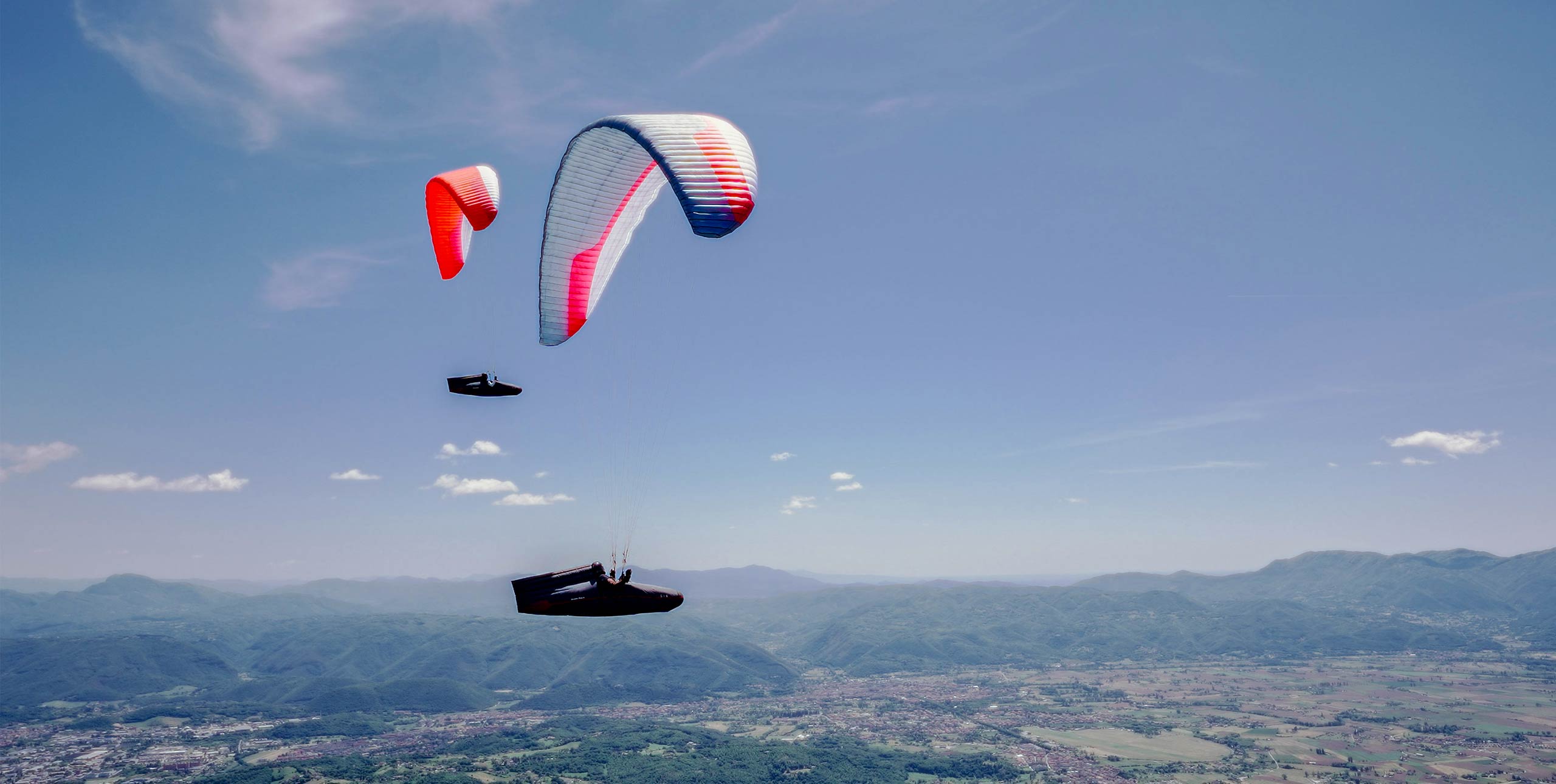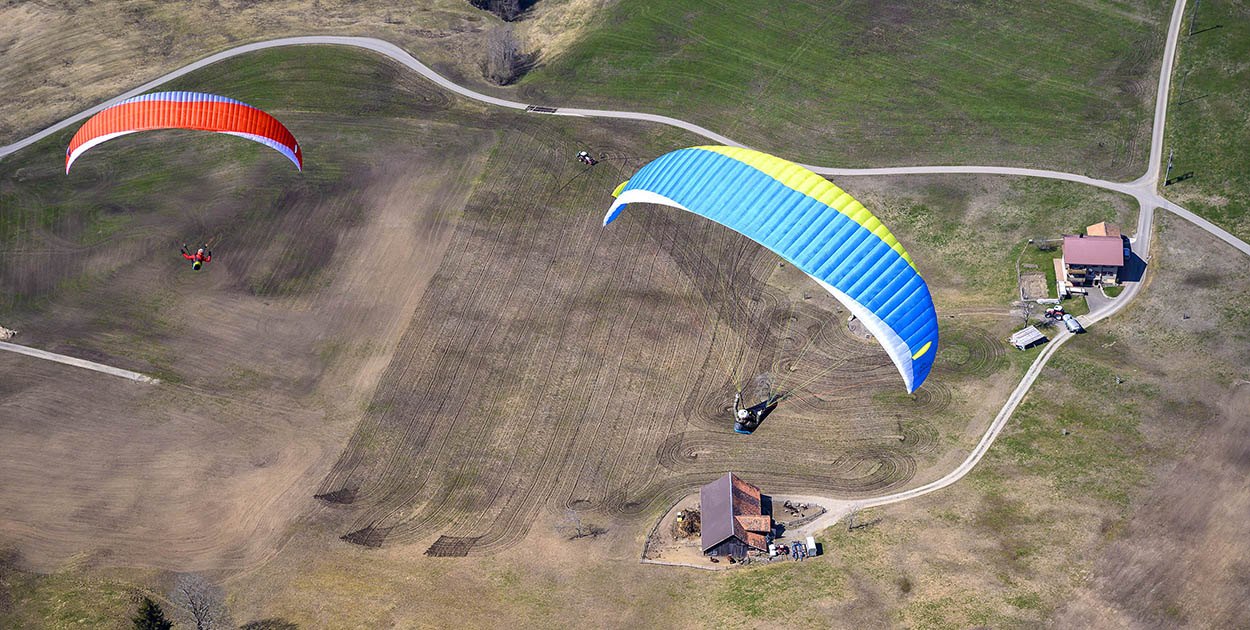
Flying 50k is a landmark achievement in a new pilot’s cross-country career, but it can seem elusive at first. Nigel Page shares his top 10 tips for flying cross country.
Where I fly in Britain we seldom get strong thermals, so to fly cross country pilots have to specialise a little in flying weak conditions. In my book 50K or Bust! I try to pick techniques that give new pilots the best chance of flying for a long duration away from the starting ridge so they can gain experience easily. Here are my top 10 tips for flying your first cross country.
1. Starting ridges can be crowded. Keep looking around in all directions, up and down as well as left and right. This is not just for safety. Thermals are most easily located by spotting other pilots climbing. It works the other way too. If you are flying towards someone and they appear to sink, turn away quickly!
2. If you follow someone keep a good distance and off to one side. It is very hard for a pilot to keep an eye on someone directly behind. Try to find a spot where he can easily see you and you are not going to inhibit any manoeuvre he might want to make if he finds lift. If he can easily see you and you hit lift yourself he will be able to make use of it too. You can then help each other up the thermal.
3. If there is a single key to flying XC it is good thermalling. Make sure you enjoy learning to thermal, finding thermals, feeling them out, optimising your climb in them and sharing them with others. While you are in a thermal you belong to it, not the other way round!
4. You must learn to thermal by turning both ways – to the left and to the right. We are flying skies which are more crowded than in the past and we have to be able to thermal in both directions to do this. Most pilots have a ‘strong’ and ‘weak’ side when thermalling. I do, and I make sure I practise more on my weak side.
5. If you find a thermal near another pilot who is already thermalling, try and start your turn in the same direction as them even though you are using a different thermal. Thermals (or more correctly, cores) that are close together usually merge. If both pilots are already turning the same way it is much easier to deal with when they do.
6. Unless the wind is very light use the ‘get high stay high’ technique. Climb as high as possible in a thermal and get your kilometres by drifting with the thermal in the wind. In weak conditions the climb-and-glide technique (climbing in a thermal and going on a glide as soon as you have reached maximum height) requires much greater skill.
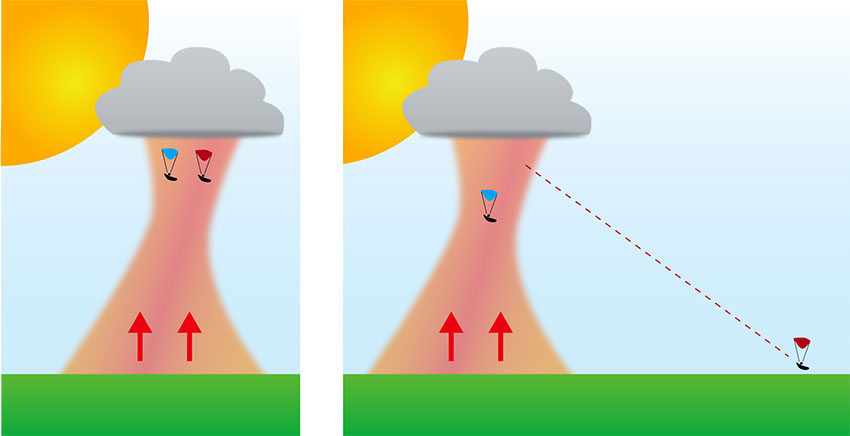
7. Do not leave a thermal which is working unless you have a good target thermal within easy reach. Have a look at the illustration above. Two pilots are at 600m in a thermal with air rising at 0.8m/s. This is not enough to maintain height and their varios tell them they are descending at about 0.2m/s. Pilot B takes a glide whilst pilot A stays with the thermal. After ten minutes pilot A is still at 480m whereas pilot B is on the ground. Pilot B may have managed to glide a few kilometres but pilot A is still in the game. The 0.8m/s thermal may develop into something better or pilot A may spot something else developing nearby. If you are going to leave a thermal you want your chances of finding another to be very good indeed.
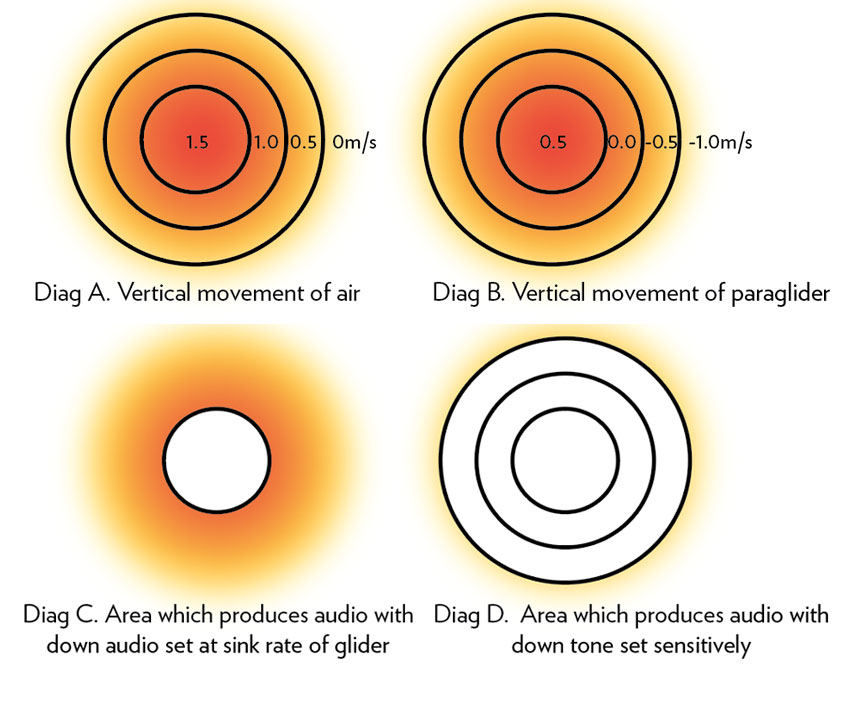
8. Try setting the down audio on your vario so it begins to sound at a sink rate of about 0.1 to 0.15m/s. Diagram A shows vertical air movement in different areas of a weak thermal. Diagram B shows what the vertical movement of a paraglider with a still air sink rate of 1m/s would be in the same areas of that thermal. To get a climb in this thermal a pilot would need to locate the centre-most area.
9. Keep looking around in all directions for potential lift. Although your XC flight is downwind, don’t be afraid to move upwind to stay airborne. If you ‘fall out’ of a thermal it’s most likely to be back upwind.
10. Try not to think about kilometres. Just enjoy staying up. All the time you are airborne you are drifting in the wind, making distance and acquiring experience of staying up away from the hill. Fly for duration and let the kilometres come to you.
Nigel Page’s print-on-demand book, 50K or Bust! can be found at www.50k-or-bust.com


